Pirates Project
Helena Tunysová has been teaching English for 12 years at middle and secondary school in the Czech Republic. Her current interests lie in sports /she is a class teacher of a special sport class/, travelling /she has also graduated from Tourism and Hospitality and works for the travel agencies during the summer/ and numerous unsuccessful attempts to manage Spanish languageJ One of her main hobbies is also further education in experiential pedagogy and leadership of the outdoor courses for students. mail:h.tunysova@centrum.cz
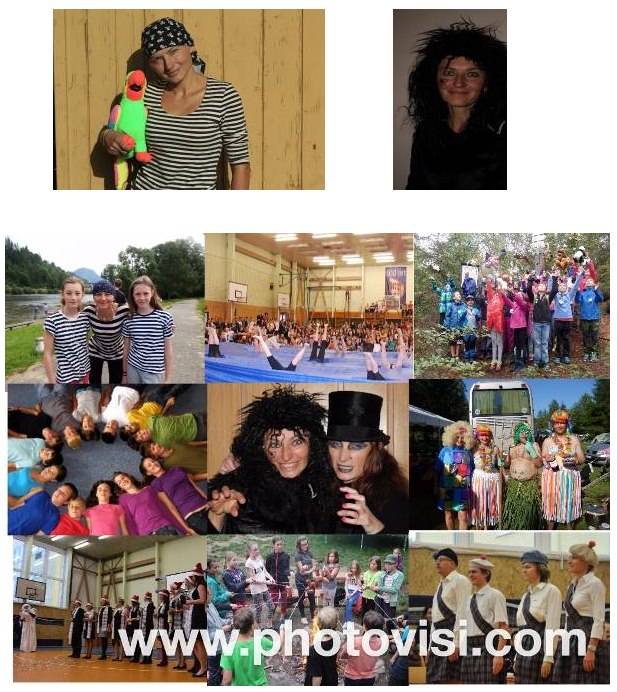
On creativity
“The most powerful way to develop creativity in your students is to be a role model. Children develop creativity not when you tell them to, but when you show them to.“
Source: Robert J Sternberg, How to develop student creativity
No matter how hard you try in your classrooms, no matter how creative, new and super powerful your activities seem to be, without a strong bond with your students and a good stress-free atmosphere nothing would work. So the most crucial and the very first stage of your teaching is to create a trustful and close relationship not only with your students, but if possible, also with their parents.
What do I personally do to create such atmosphere? For 4 years in a row, I have had an honour /and a huge responsibility/, to lead an Introductory course for our new students. They spend a couple of days with their class teachers and me / I am their English teacher later on/ far from the civilisation, without the mobile phone, with no Facebook etc…, in the camp in the woods.
There, I try to fill the days with loads of motivational and creative activities in which the students not only get to know each other and themselves, but also have to solve out a lot of very unpredictable tasks. Each year there is a topic of the course / /Pirates, Castaways, ZOO keepers, Exlorers of the North Pole/ and all the tasks within these few days are based on this topic.
The course is a wonderful preparation for their cooperation later on in the class. They try to learn how to work with empathy, how to build the self-confidence, how to learn through positive new experiences etc. Later on, they are not stressed to express their own ideas, now matter how extraordinary and different they might be.
Within these four years in which I run these Introductory courses , I can clearly see the great impact of teaching them through experience. What is more, I am not the one providing teacher-centered activities, they learn from each other.
There have been dozens of books with hundreds of articles written about every single aspect of teaching, including creativity. I would only modify something I have read somewhere. That is why, I would love to give you a particular example of the positive impact of creative learning on my students. Creative pupils do not necessarily follow the rules, and that is great. One of the girls, very talented and popular in the class, stood up during an activitiy in which she could pin herself on the board of honour / see the poster with the boat below/ and chose a very weak, shy, unpopular student of opposite sex instead, saying it must be much harder for him than for her being here, socialising and solving all the tasks.She made an enormous difference for this boy.
I strongly believe this would have never happened if they were not given a chance to spend the first week not in the class, but in this Introductory course. I love my creative, independent, open – minded and kind students.
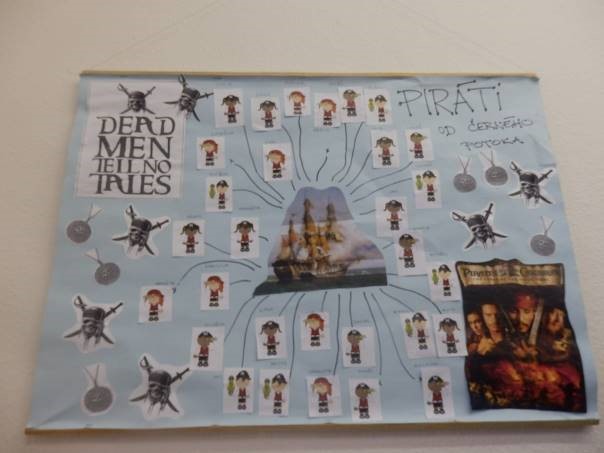
About the plan
This plan is not a typical lesson plan based on 45-minute lesson. As I mentioned previously, I start my creative teaching year with the “ Introductory course“. Each course has a different main topic which runs through all the activities. Let me demonstrate everything on this year course with a Pirate topic.
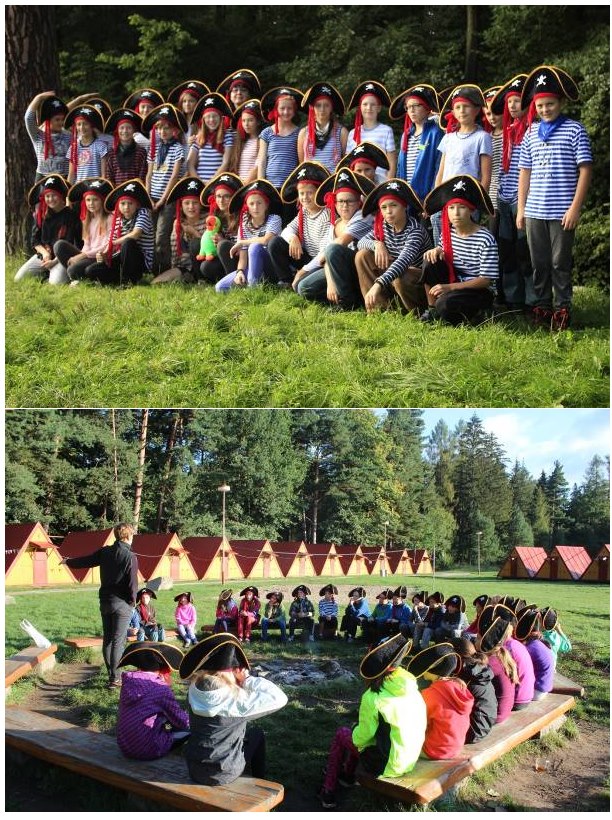
Based on experiences from the Introductory camp, my lesson project focuses not only on using students experiences creatively, but also aimes at students´ parents later on. Almost each child is willing to play and dream, however, it is much harder if you want to incorporate their parents into the process of their child learning. However, if you are successful, it is a wonderful start, as a cooperative parent can be a treasure for your class.
From my 4- year experience with these courses, I have only seen excited faces of my students´parents so far.
Project plan
Preparation /not in the classroom yet, but still in the camp/
Before the school year starts, students at the camp are already asked to make groups of 4-5. They are told to have their eyes and mind open as later on they are going to have an exhibition and auction of the posters they are going to make. Even at this stage, it forces them to speak together, to make plans, to cooperate, to express their ideas, to look for the materials they might need etc.. Students who hardly know each other are forced to cooperate in a natural environment. If the level of their English is fair enough, they might even be asked not to mix English and their mother tongue together, but do it only in English. I am always surprised how these little kids / aged 11/ who can hardly introduce themselves in English are able to express what they want if they need to.
Step one / two 45-minute lessons/
Once back at school, groups of students are given all the stationery materials and are asked to make a poster based on the topic of the course they just went through. Students then are usually given 2 lessons to work on their poster. They shouldn´t use their mother tongue in this stage.
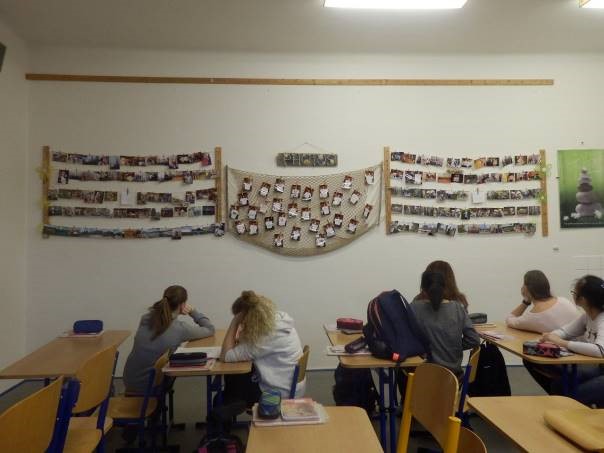
Step two / one 45-minute long lesson/
Students are asked to create a story which would be later on used to introduce their poster during the auction. The story should be based on their previous experience from the camp /where, when, why, what, how valuable the poster is etc./. It is explained to them that in the end there will be a special fancy meeting at school which their parents, teachers and the principal of the school are going to attend. During this meeting, experiences are shared, photos are shown to the parents and the parents got a wonderful chance to get to know each other in a friendly environment. In the end, there is an auction of students´ pieces of work.
Step three / afternoon meeting with the parents, auction/
As the course takes place usually in the first week of September, around 10th September parents are invited to a special meeting with the kids, teachers and principal. These first ordinary meetings at schools are usually very formal and the atmosphere might not be owerwhelmingly positive. I have been trying to change it since we started these courses. Parents come to school, not knowing each other and not having a clue what to expect, usually expecting another formal, boring parent – teacher meeting.
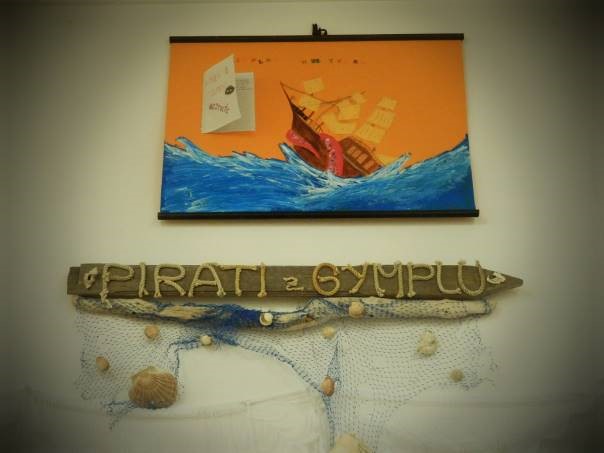
However, everything is different than they expected. All the children prepare a presentation full of pictures from the course. While parents are watching it, students get ready into the groups for the poster auction. Each group then have some time in which they need to present their poster to the audience, using a story „behind the poster“, introducing it. And then the auction for parents begins. Posters are offered in the auction to the parents who bid. There is usually a lot of bidding and a lot of fun seeing parents trying to put the highest bid in. All the money students get from the auction are then counted, put into a „Treasure box“ and used for school trips, notebooks, school theatres, stationery or helping schoolmates from low-income families to join in the activities they would not be able to attend without financial help etc.,
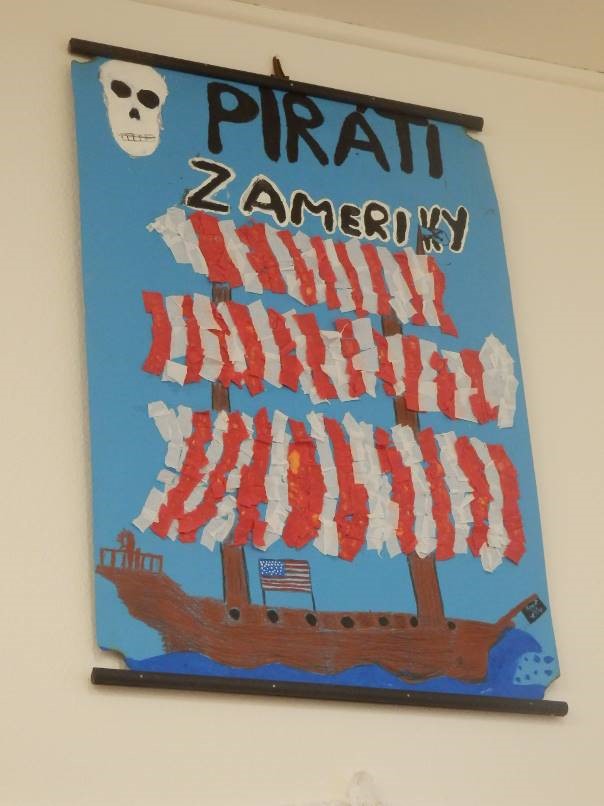
Thanks to the auctioning, the ice is long broken and students and teachers plus the headmaster roam freely in the room, talking to each other, sharing their experiences. What is more, the kids are thrilled by the fact that their parents can be very playful too /seeing them auctioning/.
Conclusion
I am absolutely positive about the impact the whole course and the poster auction has. Since then, I have never had a problem to contact parents whenever I needed it. And a positive triangle Teacher- Student-Parents is the clue to everything.
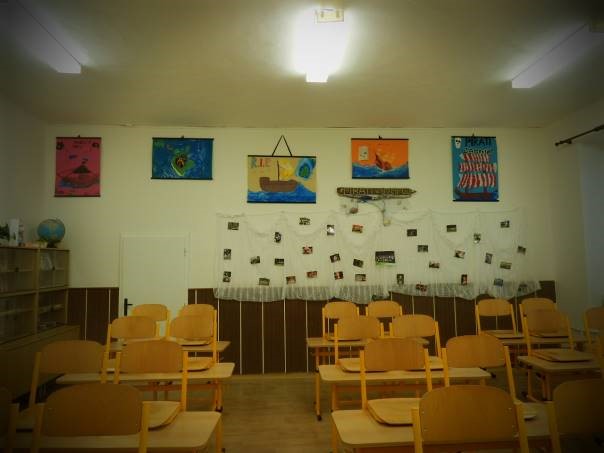
Please check the Creative Methodology for the Classroom course at Pilgrims website.
Please check the Methodology and Language for Kindergarten course at Pilgrims website.
Please check the Methodology and Language for Primary course at Pilgrims website.
Sundry Literature Lessons (2)
Robert Feather, UKLiterature Lessons (2)
Mario Rinvolucri, UKPoem as an Ice-breaker
Jaber Kamali, IranAn Effectual Oral English Course Formula for Chinese University and College Oral English Classes That Foreign Experts Can Use on a Regular Basis
Clair Lasater, USPirates Project
Helena Tunysová, the Czech Republic